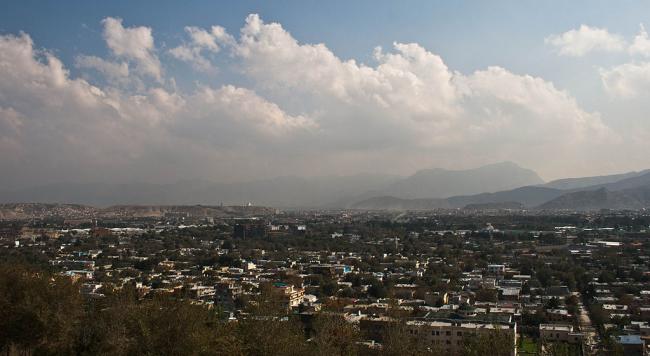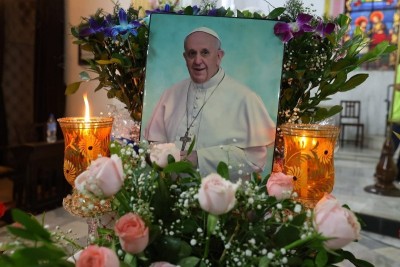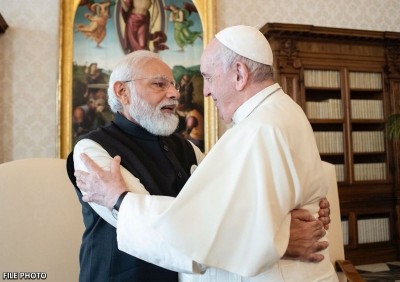
Drift into Reality
Indeed, US President Barack Obama, announcing the hit, observed that the US had "removed the leader of an organization that has continued to plot against and unleash attacks on American and coalition forces... He is an individual who as head of the Taliban was specifically targeting U.S. personnel and troops inside of Afghanistan who are there as part of the mission I have set to maintain a counterterrorism platform and provide assistance."
Pakistan has continuously leveraged its 'influence' over the Taliban to create a rolling crisis of terrorism in Afghanistan, and has then offered its own 'good offices' to help find a 'solution' - most recently through the still-born Quadrilateral Coordination Group (QCG) mediated peace talks. For reasons unknown, Washington played along in this charade even during the period of heightened deployment, when the Taliban inflicted daily casualties on US and International Security Assistance Force (ISAF) troops, as well as on the Afghan National Security Forces.
In another indication of the loss of past and unwarranted patience, the US Congress blocked subsidies on the sale of eight F-16 Fighter jets on the grounds that Pakistan had failed to shut down sanctuaries of the Haqqani Network on its soil, as well as concerns regarding Islamabad's rampaging nuclear programme. Pakistan allowed the deal to lapse once US finance was made unavailable.
There has been a rising anger in Washington over the past decade and a half against Pakistan's two-faced approach, but till the US-ISAF 'drawdown' of 2014, US planners had failed to develop alternative supply routes for their troops in Afghanistan, and gave Islamabad an extraordinarily long leash as a result of their logistical dependence. Astonishingly, a delusional cluster of American and international supporters persisted with the policy of giving Pakistan, the principal purveyor of strife in the region, centrality in the purported 'peace process' even after the drawdown, and despite the crescendo of violence in Afghanistan orchestrated by groups manifestly operating under state protection from Pakistani soil.
The Mansour strike clearly puts Pakistan on notice, indicating that the Taliban leadership - including Mansour's successor Haibatullah Akhundzada, as well as 'deputy supreme leaders' Sirajuddin Haqqani and Mullah Yaqoob (Mullah Omar's son) - no longer enjoys impunity. A likely outcome is that this entire leadership will be pushed deeper underground. Indeed, in 2010, when the Obama Administration had shown signs of extending its campaign of drone attacks against elements of the Taliban's Quetta Shura, the ISI had responded by shifting top leaders, including Mullah Omar, the then chief of the Afghan Taliban, to the port city of Karachi, far South. It is significant that Mullah Omar is said to have died in Karachi, in 2013 according to the official Pakistani position, but possibly earlier. While this may help temporarily secure these leaders, it is likely to create increasing challenges of command and control, and, crucially, of trust, given the ISI's protracted fraud of keeping Mullah Omar's death a secret, even as it continued to exercise control over the movement in his name.
Moreover, despite widening theatres of violence in Afghanistan and rising fatalities, things are not going too well for the Taliban. Since the launch of the latest summer offensive, the Taliban's Operation Omari, on April 12, 2016, according to partial data compiled by the South Asia Terrorism Portal (SATP), 2,884 fatalities in terrorist violence have been recorded across Afghanistan till May 30, 2016; of these, 2,599 (90.11 per cent) have been Taliban and other terrorist cadres. The Security Forces (SFs) have lost 126 personnel (4.36 per cent of total fatalities), and 159 civilians (5.82 per cent) have been killed. These numbers are broadly consistent with the trajectory of escalating violence in Afghanistan since the drawdown. Thus, 10,576 persons were killed in 2014, including 6,030 Taliban (57 per cent), 845 SF personnel (7.98 per cent), and 3,701 civilians (34.99 per cent). 2015 saw at least 15,422 fatalities, including 10,628 terrorists (68.27 per cent), 1,249 SF personnel (8.1 per cent), and 3,545 civilians (22.99 per cent). A total of 7,977 fatalities have been recorded in 2016 (till May 30), and terrorists account for 6,835 (85.68 per cent); SF personnel, 357 (4.47 per cent); and civilians, 785 (9.84 per cent). While these are likely underestimates of the actual death toll, the broad trends would be consistent with the situation on the ground. Thus, the United Nations Assistance Mission in Afghanistan (UNAMA) recorded at least 600 civilians killed in the first quarter of 2016, but noted that this was a 13 per cent decrease over the same period in 2015.
Other indices also confirm declining effectiveness of insurgent violence. Thus, in 2014, 572 persons were killed in 83 suicide attacks; in 2015, 368 persons were killed in 74 suicide attacks; and in 2016, 16 suicide attacks have resulted in 203 fatalities, including at least 64 killed in the devastating car bombing followed by small arms assault of April 19, 2016, in Kabul.
Further, while Pakistan was able to cobble together some surface unity after Mullah Mansour's disputed succession , the Taliban is far from united. Perhaps the most visible sign of internal contestation is the defection of a number of splinters to Daesh (Islamic State). While grave apprehensions have been expressed regarding the dangers of consolidation of this extraordinarily brutal group, the immediate impact of this fragmentation favours Kabul. While the Daesh linked splinters, under the flag of the Islamic State - Khorasan Province (IS-KP) have vested dominance in significant parts of the Nangarhar Province from the parent Taliban formations, this has unleashed a fratricidal turf war between these insurgent groups. The declaration of affiliation to Daesh has, moreover, attracted a disproportionate response from US Forces, who have targeted them in an intensive and effective drone and aerial campaign, forcing to flee in fragments into across remote mountainous regions in the province.
Nevertheless, the Taliban continues to hold sway across an estimated 30 per cent of all Afghan Districts, and a violent presence in 27 of Afghanistan's 34 provinces. This dominance is, however, overwhelmingly the consequence of the unqualified support and safe havens it receives from the Pakistani state and its agencies, and the cover of impunity from US attack its leadership in Pakistan has hitherto operated under. As has been remarked in the past, the problem of Afghanistan is not the Taliban; it is Pakistan.
As long as the US and the international community does not explicitly acknowledge this reality and shape strategies to deal with this enduring challenge, the carnage in Afghanistan will continue. The elimination of Mullah Mansour in a US drone attack on Pakistani soil gives at least momentary hope that future policies will not be framed in an environment of the denial of ground realities and the delusional pursuit of 'solutions' proposed by the principal source of Islamist terrorism in South Asia.
Image: Wikimedia Commons
Support Our Journalism
We cannot do without you.. your contribution supports unbiased journalism
IBNS is not driven by any ism- not wokeism, not racism, not skewed secularism, not hyper right-wing or left liberal ideals, nor by any hardline religious beliefs or hyper nationalism. We want to serve you good old objective news, as they are. We do not judge or preach. We let people decide for themselves. We only try to present factual and well-sourced news.







